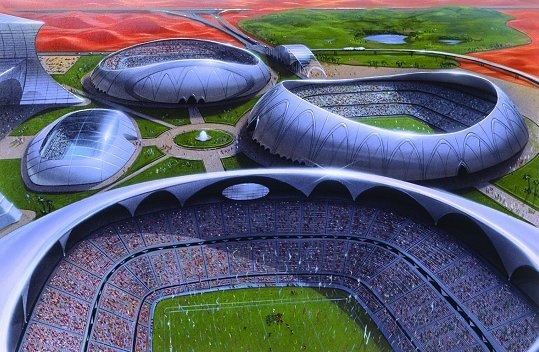Civil engineers have one of the world's most important jobs: they build our quality of life. With creativity and technical skill, civil engineers plan, design, construct and operate the facilities essential to modern life, ranging from bridges and highway systems to water treatment plants and energyefficient buildings. Civil engineers are problem solvers, meeting the challenges of pollution, traffic congestion, drinking water and energy needs, urban redevelopment and community planning.
There are seven major, interrelated branches of civil engineering:
Structural Engineering
Structural engineers face the challenge of designing structures that support their own weight and the loads they carry, and that resist extreme forces from wind, earthquakes, bombings, temperature and others. Bridges, buildings, amusement park rides and many other kinds of projects are included within this speciality. Structural engineers develop appropriate combinations of steel, concrete, timber, plastic and new exotic materials. They also plan and design, and visit project sites to make sure work is done properly.
Environmental Engineering
The skills of environmental engineers have become increasingly important as we protect our fragile resources. Environmental engineers translate physical, chemical and biological processes into systems to destroy toxic substances, remove pollutants from water, reduce nonhazardous solid waste volumes, eliminate contaminants from the air and develop groundwater supplies. Environmental engineers are called upon to resolve the problems of providing safe drinking water, cleaning up contaminated sites with hazardous materials, disposing of wastewater and managing solid wastes.
Geotechnical Engineering
Geotechnical engineering is required in all aspects of civil engineering because most projects are supported by the ground. A geotechnical engineer may develop projects below the ground, such as tunnels, foundations and offshore platforms. They analyse the properties of soil and rock that support and affect the behaviour of these structures. They evaluate potential settlements of buildings, the stability of slopes and fills, the seepage of ground water and the effects of earthquakes. They investigate rocks and soils at a project site and determine the best way to support a structure in the ground. They also take part in the design and construction of dams, embankments and retaining walls.
Water Resources Engineering
Water is essential to our lives, and water resources engineers deal with the physical control of water. They work with others to prevent floods, supply water for cities, industry and agriculture, to protect beaches or to manage and redirect rivers. They design, construct and maintain hydroelectric power facilities, canals, dams, pipelines, pumping stations, locks, seaport facilities or even waterslides.
Transportation Engineering
The quality of a community is directly related to the quality of its transportation system. Transportation engineers work to move people, goods and materials safely and efficiently. They find ways to meet our ever-increasing travel needs on land, air and sea. They design, construct and maintain all types of transportation facilities, including airports, highways, railroads, mass transit systems and ports. An important part of transportation engineering is upgrading our transportation capability by improving traffic control and mass transit systems, and by introducing highspeed trains, people movers and other intermodal transportation methods.
Construction Engineering
The construction phase of a project represents the first tangible result of a design. Using technical and management skills, construction engineers turn designs into reality on time and within budget. They apply their knowledge of construction methods and equipment, along with the principles of financing, planning and managing, to turn the designs of other engineers into successful facilities.
Urban and Community Planning
Planners are concerned with the full development of a community. They analyse a variety of information to co-ordinate projects, such as projecting street patterns, identifying park and recreation areas, and determining areas for industrial and residential growth. They employ their technical and people skills to co-ordinate with other authorities to integrate freeways, airports and other related facilities.
Qualifications and Trends
More and more, those entering the civil engineering field must have skills in communication, computers, management and foreign languages, as well as advanced knowledge in a speciality within civil engineering. Students increasingly need to have knowledge of foreign languages or cultures, because many civil engineering mega projects are now overseas: Petronas Towers in Malaysia, the Channel Tunnel in Europe and the new Akashi Kaikyo Bridge in Japan, which is the longest suspension bridge in the world.
Engineers with geotechnical and environmental engineering expertise remain in strong demand because environmental concerns touch all infrastructure projects. Robotics and computer skills are also prized in civil engineering as automation and information technologies continue to evolve the civil engineering workplace. Today's engineers will see more specialisation, working in teams, globalisation, new materials and increased use of computer applications.
Today, engineers must continue their education long after their bachelor's degree. Whether through continuing education and professional development programs, many of which are offered through ASCE, or master's degree programs, students will need to increase their knowledge base to remain competitive. In addition, more and more employers are encouraging employees to earn master's degrees and become licensed professional engineers.
Future Demand and Salaries
The demand for civil engineers will remain strong. According to the U.S. Department of Labor, the number of U.S. civil engineering jobs will increase from the current 184,500 (1994 figure) to 218,700 by the year 2005. That growth rate is average for most job fields. The market for engineers in the U.S. is in infrastructure renewal, as so much of our infrastructure - from highways and bridges to water treatment systems and dams - are decaying and in need of repair. In 1998, the U.S. Congress passed a new transportation funding bill that increases spending by 40 percent to rebuild some 150,000 miles of roads. The new funding will create 1.4 million new jobs in the transportation construction industry, according to the American Road and Transportation Builders. Many engineering firms and state transportation departments are understaffed to handle all the work.
According to the most recent U.S. salary survey conducted by ASCE in 1995, entry-level civil engineers earn an average of $32,000; mid-career engineers earn $52,000-$58,000; and senior engineers average $73,000-$86,000.
Resources for Students
The American Society of Civil Engineers (ASCE), headquartered in Reston, Virginia, is a professional society for 123,000 civil engineers worldwide, with several programs to encourage and support civil engineering students. The Society publishes a booklet on civil engineering careers, and has active student chapters at more than 225 colleges and universities throughout the U.S. For more information on civil engineering careers or college engineering programs, contact the Educational Activities Division of ASCE at 703/295-6000.
Author
James E. Davis
Executive Director and CEO
American Society of Civil Engineers










 I have spent just over a year thinking about the International Green Construction Code (IgCC). I know it has been one year because I received my first copy of the code at Greenbuild 2010. My conclusion today about the code is no different than it was one year ago:
I have spent just over a year thinking about the International Green Construction Code (IgCC). I know it has been one year because I received my first copy of the code at Greenbuild 2010. My conclusion today about the code is no different than it was one year ago:


 basketball and volleyball, capacity 10,000 spectators; and a dedicated hockey stadium, capacity 10,000 spectators.
basketball and volleyball, capacity 10,000 spectators; and a dedicated hockey stadium, capacity 10,000 spectators. 













